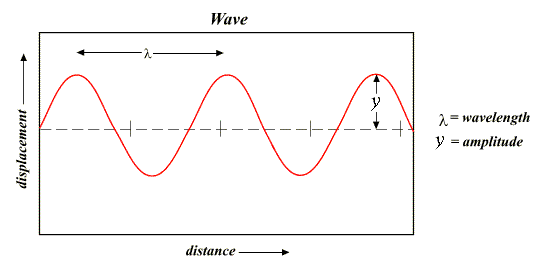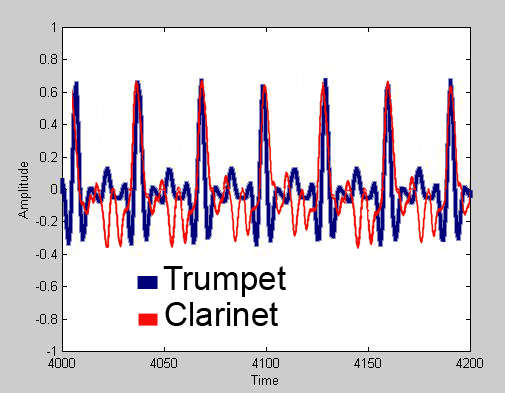Continuous Media: Audio
Sound Waves
Sound is produced by vibrations in a medium, usually air. Sound travels when the disturbance at the source is transmitted to neighboring molecules and propogated in the form of a wave.
The resulting pattern of oscillating pressure is called a waveform.

- Frequency (wavelength)
- Measured in hertz (Hz) or cycles per second
- Humans can hear 20 Hz - 20 kHz
- Frequency is perceived as pitch
- Amplitude
- Measures displacement of air pressure wave from its mean
- Measured in decibels: dB = 20 log10(A/B)
- Amplitude vs. loudness
- Duration is the length of time the sound lasts
Timbre is the quality that gives a periodic waveform its unique sound, e.g. a trumpet vs. a clarinet

Find out more about how
Analog Versus Digital
Analog signals are continuous and analogous to the original physical phenomenon.
Digital signals are measurements taken at discrete time/space intervals.
- Sampling rate
- Measured in hertz (Hz) or samples per second
- Nyquist rate = 2x the maximum frequency
- Aliasing results from too low sampling rate
- Quantization
- Number of bits used to represent each sample
- Quantization error caused by lack of precision
- Conversions
- Analog to Digital Converter (ADC) samples analog signal, filters components
above the Nyquist frequency
- Digital to Analog Converter (DAC) produces signals from numbers, may oversample
for better sound
- Examples
- Voice-quality audio is recorded at 8 kHz, 8 bits per sample
- CD-quality audio is recorded at 44.1 kHz, with 16-bit linear Pulse Code
Moduloation (PCM) encoded value
Find out more about
Digital Audio Formats
- Sampled Sound Files
- Size of (monaural) digital audio = sample rate * sample size * sample time
- AIFF and WAV are uncompressed
- MP3 is lossy, using psychoacoustic models to identify "less-important" frequencies
- Advantages:
- high quality
- ease of creation
- ease of editing
- consistent playback quality
- Synthesized Sound
- MIDI = musical instrument digital interface, composed of messages
- Advantages:
- editing control
- small files
Find out more about

